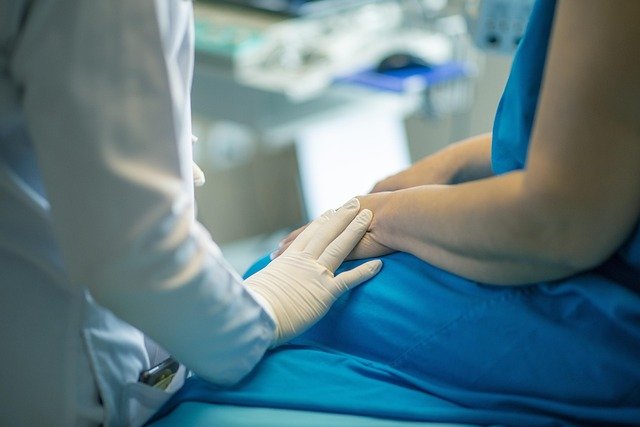NonSurgical Approaches to Reducing Anal Masses
Anal masses can cause rectal discomfort, perianal swelling, bleeding, and itching that affect daily life. Many people prefer noninvasive strategies—dietary changes, topical care, stool management, and outpatient therapies—to reduce symptoms and lower recurrence risk while avoiding surgical recovery.

Anal masses are commonly the result of swollen vascular or tissue changes in and around the rectal canal, and they frequently cause discomfort, bleeding, itching, and a sense of fullness. Non-surgical approaches aim to relieve symptoms, improve bowel habits, and reduce inflammation through behavioral measures, topical treatments, and simple office-based procedures. For many patients, these strategies improve daily comfort and lower the chance of repeated episodes without immediate recourse to surgery. Understanding options, risks, and realistic outcomes helps people make informed decisions about care in outpatient settings.
This article is for informational purposes only and should not be considered medical advice. Please consult a qualified healthcare professional for personalized guidance and treatment.
What are common rectal and anal causes of masses?
Swelling in the rectal or anal region can arise from enlarged vascular cushions, skin tags, or other benign tissue changes. These perianal masses often result from increased pressure during bowel movements, prolonged sitting, or straining. Symptoms may include visible bulges, irritation, or bleeding after stool passage. Clinicians typically differentiate between internal and external lesions during a physical exam and sometimes with anoscopy. Identifying the underlying cause guides conservative measures and determines whether outpatient observation or a targeted procedure is appropriate.
How does perianal swelling and bleeding usually present?
Perianal swelling and bleeding commonly appear during or after defecation and may be accompanied by mucus or a feeling of incomplete evacuation. Bleeding is often bright red and can be intermittent, while swelling may be more noticeable after constipation or prolonged straining. These signs warrant evaluation because other rectal conditions can produce similar symptoms. A careful history and examination can often confirm a benign cause and permit safe initial management with noninvasive therapies focused on reducing pressure and inflammation.
Which conservative measures reduce discomfort and itching?
Initial symptom control emphasizes gentle hygiene, barrier creams, and short-term topical agents aimed at reducing irritation and providing pain relief. Cold compresses or sitz baths can soothe inflamed perianal skin, and topical anti-inflammatory or anesthetic preparations may be used briefly under medical advice. Avoiding prolonged wiping, using soft tissue, and applying thin protective ointment layers can minimize itching and surface trauma. Consistent measures help break the itch–scratch cycle and improve comfort while longer-term strategies address bowel consistency and prevention.
How do fiber and stool management help prevention?
Dietary fiber and proper stool management are central to preventing recurrence. Soluble fiber supplements and increased intake of fruits, vegetables, and whole grains soften stool, reduce straining, and normalize bowel frequency. Adequate hydration complements fiber to ease passage. Establishing regular bowel habits—responding promptly to urges and avoiding prolonged sitting on the toilet—reduces rectal pressure. In many people, modest dietary changes yield measurable reductions in bleeding, swelling, and the development of new perianal issues.
What outpatient procedures offer targeted relief and pain relief?
When conservative care is insufficient, several minimally invasive outpatient procedures can reduce symptoms. Rubber band ligation, sclerotherapy, and infrared coagulation are examples used for certain internal lesions; they are typically performed in clinic and aim to reduce blood flow to the affected tissue or promote shrinkage. Local excision of external tags may be considered for persistent discomfort. Each option has specific indications, benefits, and recovery expectations; a clinician will match the procedure to lesion type, symptom severity, and patient preferences.
When should medical assessment or follow-up be sought?
Seek professional assessment for persistent bleeding, progressive pain, signs of infection, or if symptoms do not improve with self-care over several weeks. Rapid changes in bowel habits or unusual rectal pain merit evaluation to exclude other conditions. Follow-up allows reassessment of stool strategies, topical regimens, or consideration of outpatient interventions. Early evaluation can prevent chronic symptoms and support personalized prevention planning focused on lifestyle, pelvic health, and monitoring.
Non-surgical strategies for reducing anal masses combine symptom relief, stool normalization, and selective outpatient therapies to address the underlying contributors to swelling, bleeding, and itching. With careful evaluation and stepwise care, many people achieve meaningful improvement while minimizing invasive treatment. Ongoing dialogue with a healthcare professional helps align management choices with individual needs and long-term prevention goals.






